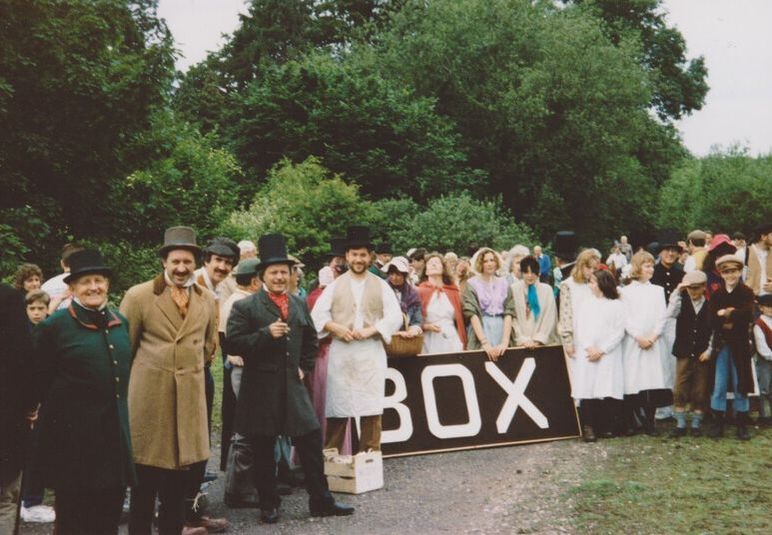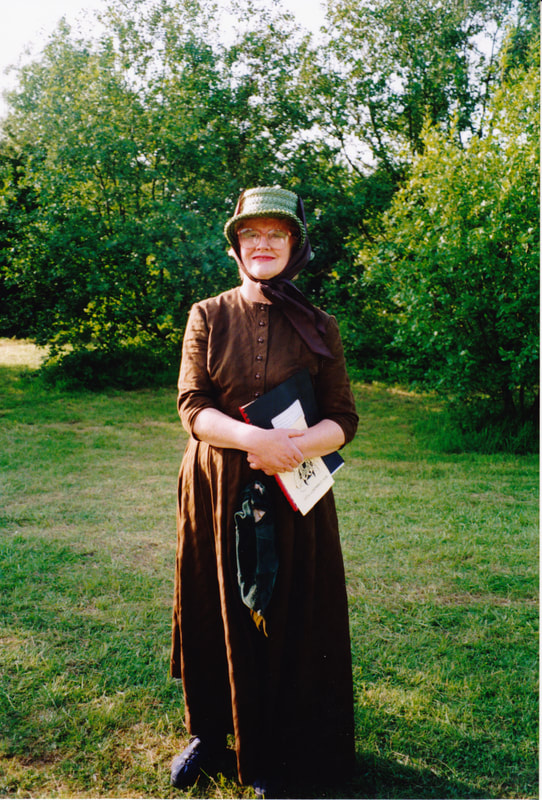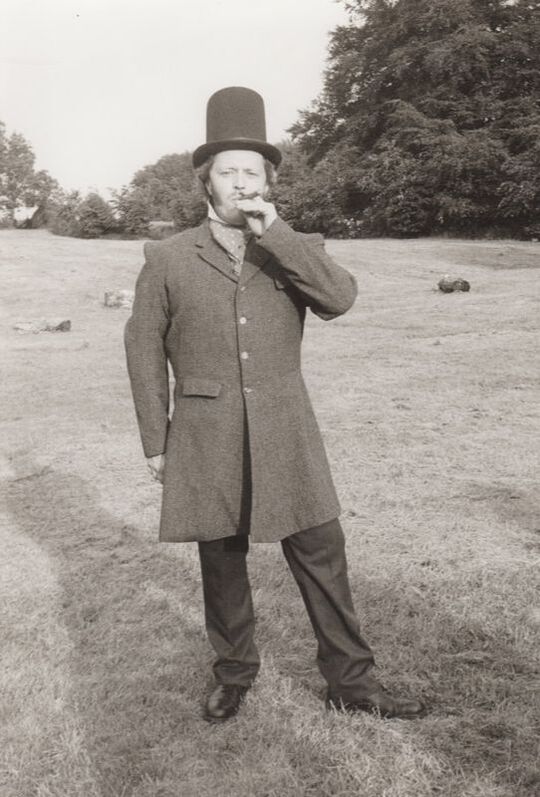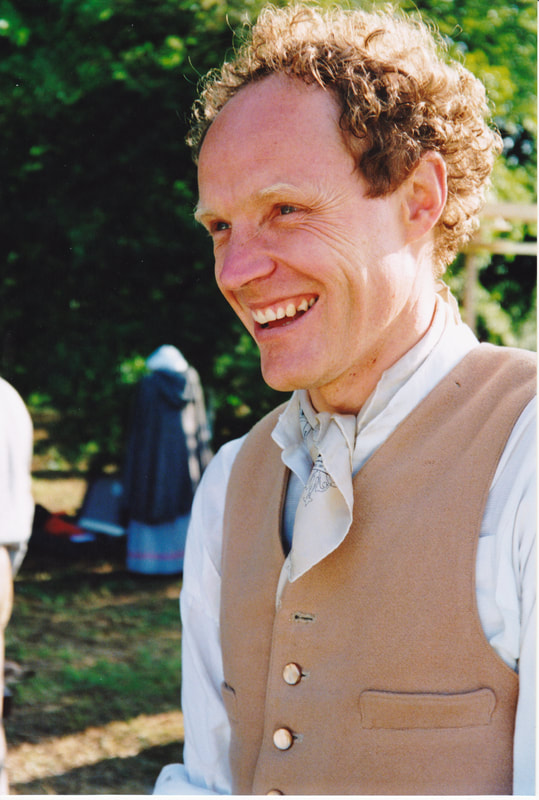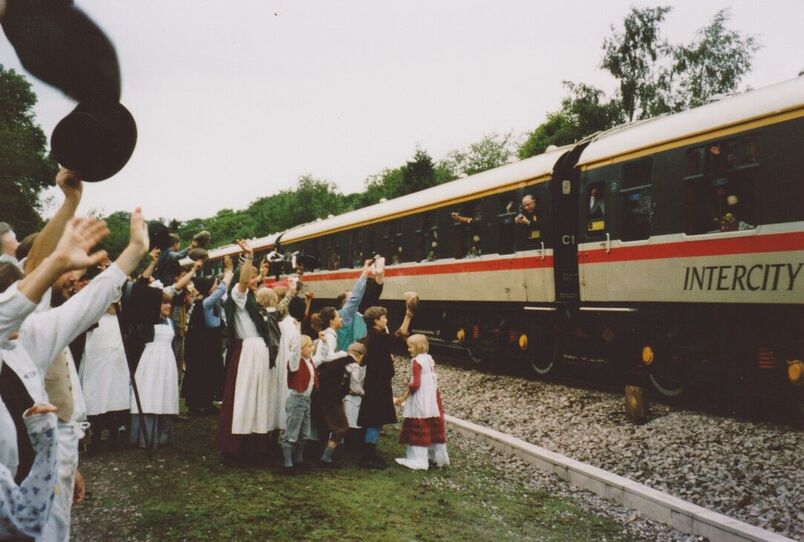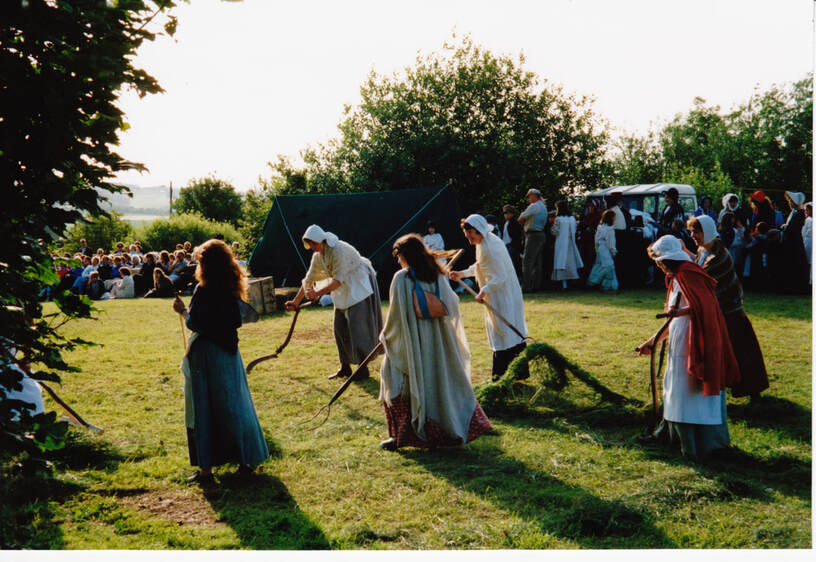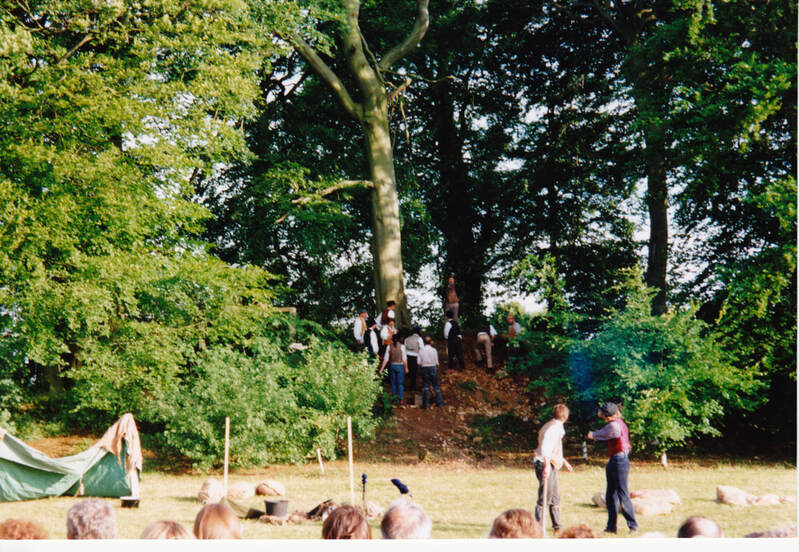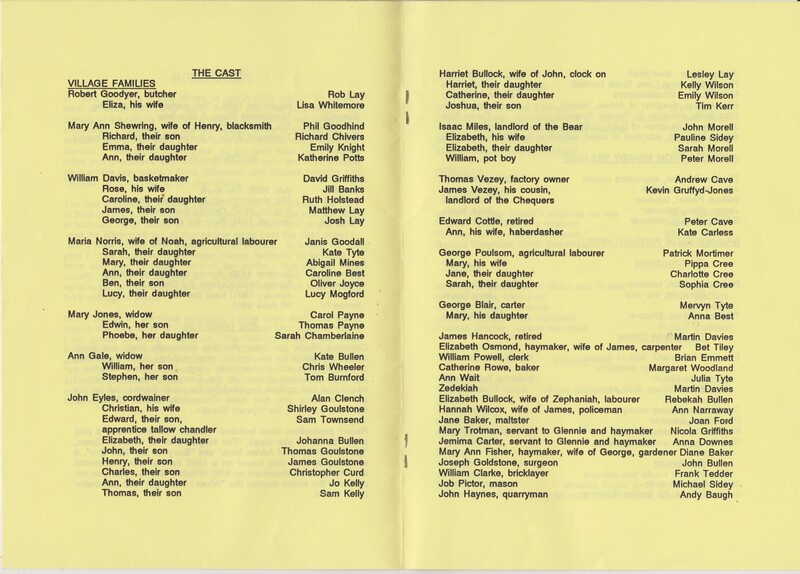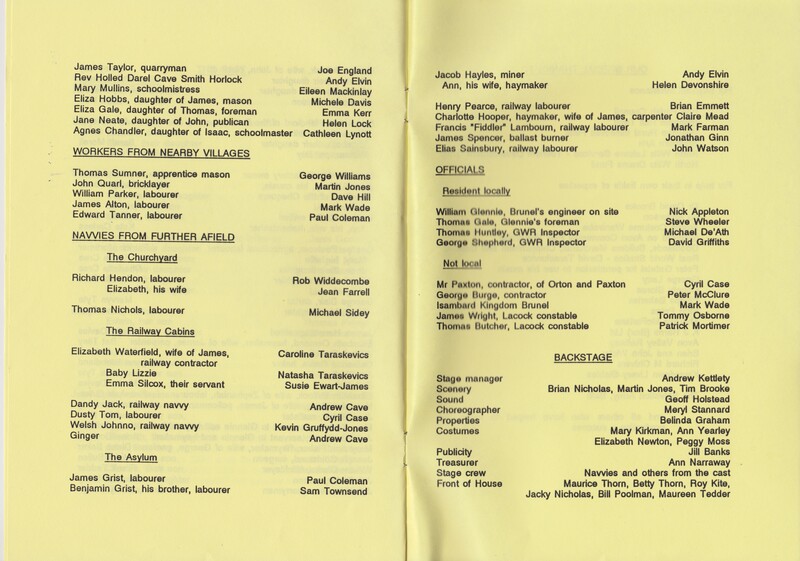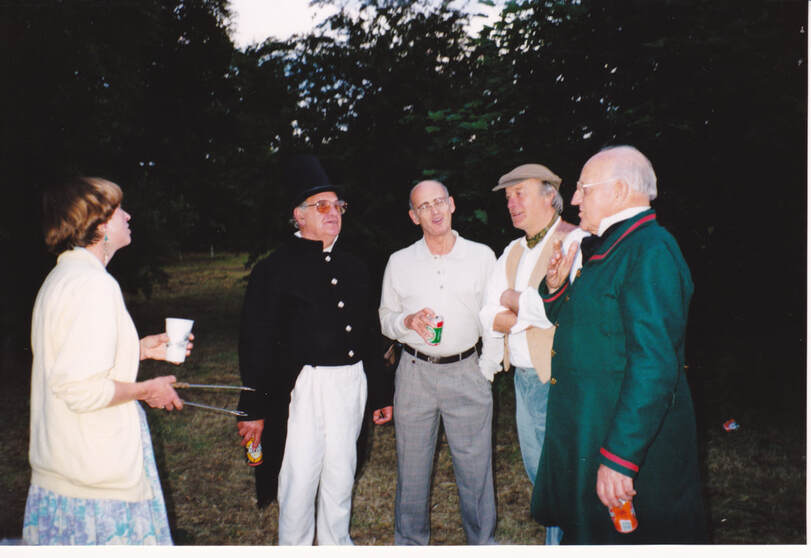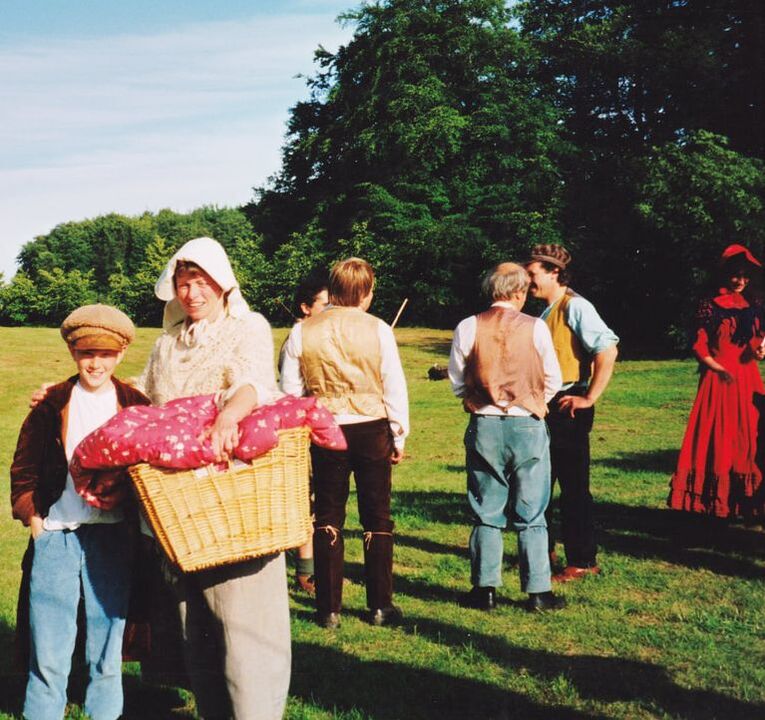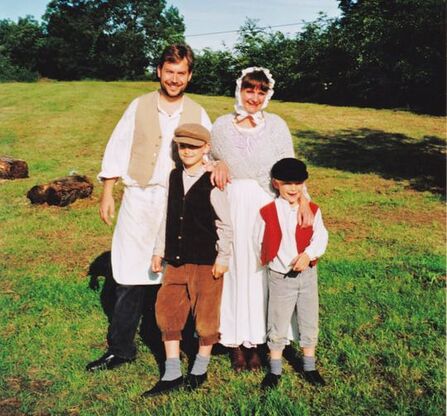A Devil’s Device Photos Carol Payne July 2021
In the last issue we asked for memories of A Devil’s Device, a community play written and produced by Box residents, Audrey and Peter Cave, to celebrate the anniversary of the 150th opening of the Box Railway Tunnel on 30 June 1841. These are your kind contributions.
The play was directed by Catherine Halder, a respected Wiltshire director who worked in community drama at the Wyvern Theatre, Swindon. She was already a successful dramatist and her works included the award-winning film When I was a Girl and radio broadcasts on BBC Wiltshire Sound. She still retains an active involvement in teaching and moderating drama in the area.
The play was directed by Catherine Halder, a respected Wiltshire director who worked in community drama at the Wyvern Theatre, Swindon. She was already a successful dramatist and her works included the award-winning film When I was a Girl and radio broadcasts on BBC Wiltshire Sound. She still retains an active involvement in teaching and moderating drama in the area.
Above left: Audrey Cave, the writer; Middle Mark Wade as Brunel (courtesy Eric Hayman); and Right: Dr Kevin Gruffydd-Jones playing Welsh Johnno, railway navvy.
Name of the Play
To contemporaries, self-moving steam railway engines were something extraordinary. They puffed out fire and smoke from their chimney and made a fierce-some noise. The first railway engines were regarded as the product of the devil himself.
According to the Bible, the devil’s devices for promoting evil are subtlety, ignorance, doubt, pride, sin and fear.[1] Satan’s tricks and tactics bear little in common with the construction of Box Tunnel. but it was a most suitable title for the anguish which some Box locals felt at the start of a new technological age in 1841. The developer of the first, passenger steam engine, Richard Trecothick, brought out the irony in being afraid of new technology when he named his engine the Puffing Devil.
Name of the Play
To contemporaries, self-moving steam railway engines were something extraordinary. They puffed out fire and smoke from their chimney and made a fierce-some noise. The first railway engines were regarded as the product of the devil himself.
According to the Bible, the devil’s devices for promoting evil are subtlety, ignorance, doubt, pride, sin and fear.[1] Satan’s tricks and tactics bear little in common with the construction of Box Tunnel. but it was a most suitable title for the anguish which some Box locals felt at the start of a new technological age in 1841. The developer of the first, passenger steam engine, Richard Trecothick, brought out the irony in being afraid of new technology when he named his engine the Puffing Devil.
The Play
The unique feature of the play The Devil’s Device was that it told the story of the opening of the Box Tunnel from the point of view of ordinary local Box people. Much of the activity was enacted on the field above Box Tunnel but the action which it envisaged took place throughout the village - from The Market Place and The Bear Inn, to the Railway Shacks for the navigators and ending with the day of grand opening in 1841. The production was enlivened by music generously contributed by Peter Gabriel.
The unique feature of the play The Devil’s Device was that it told the story of the opening of the Box Tunnel from the point of view of ordinary local Box people. Much of the activity was enacted on the field above Box Tunnel but the action which it envisaged took place throughout the village - from The Market Place and The Bear Inn, to the Railway Shacks for the navigators and ending with the day of grand opening in 1841. The production was enlivened by music generously contributed by Peter Gabriel.
The play contrasted rural lifestyles before and after the steam engine. Above: Scything crops for food for animals and people.
Below: Navvies excavating the Tunnel.
Below: Navvies excavating the Tunnel.
The Actors
A huge cast of local residents was assembled in auditions at Box Highlands School, including Caroline Taraskeviks, daughter of Leslie Crowther (as Elizabeth Waterfield, wife of James, a railway contractor in the railway cabins), Dr Kevin Gruffyd-Jones (playing two parts: Welsh Johnno, railway navvy and James Vezey, owner of The Chequers Inn), Steve Wheeler (Thomas Gale, railway foreman to William Glennie), Dave Hill (as William Parker, labourer) and, of course, a huge number of local children and teenagers. Mark Wade played the part of Isambard Kingdom Brunel and Audrey and Peter Cave also had roles. The participants are listed below and you will see that, unfortunately, many have passed away in the intervening period.
A huge cast of local residents was assembled in auditions at Box Highlands School, including Caroline Taraskeviks, daughter of Leslie Crowther (as Elizabeth Waterfield, wife of James, a railway contractor in the railway cabins), Dr Kevin Gruffyd-Jones (playing two parts: Welsh Johnno, railway navvy and James Vezey, owner of The Chequers Inn), Steve Wheeler (Thomas Gale, railway foreman to William Glennie), Dave Hill (as William Parker, labourer) and, of course, a huge number of local children and teenagers. Mark Wade played the part of Isambard Kingdom Brunel and Audrey and Peter Cave also had roles. The participants are listed below and you will see that, unfortunately, many have passed away in the intervening period.
Below: Left to right: Director Catherine Halder, Tommy Osborne (as Lacock constable), unknown, Mervyn Tyte (as George Blair, carter), Michael De’Ath. (as Thomas Huntley, GWR Inspector).
A huge cast of local people took part. Thirty-years on, many have now left the village. Above the old parish administrators and officials Below: rural folk looking resplendent.
Above Left: Carol Payne (as Mary Jones, widow) and Thomas Payne (as Edwin, her son).
Above Right: Rob Lay (as villager Robert Goodyer, butcher), Lesley Lay (Harriet Bullock, wife of clockmaker), Matthew and Josh Lay (as children of William Davis, basket-maker).
As you can see from the list of parts, most of the characters portrayed were real people who lived in the village in the mid 1800s – a great tribute to Audrey’s writing.
Above Right: Rob Lay (as villager Robert Goodyer, butcher), Lesley Lay (Harriet Bullock, wife of clockmaker), Matthew and Josh Lay (as children of William Davis, basket-maker).
As you can see from the list of parts, most of the characters portrayed were real people who lived in the village in the mid 1800s – a great tribute to Audrey’s writing.
Reference
[1] Genesis, Chapter 3
[1] Genesis, Chapter 3
